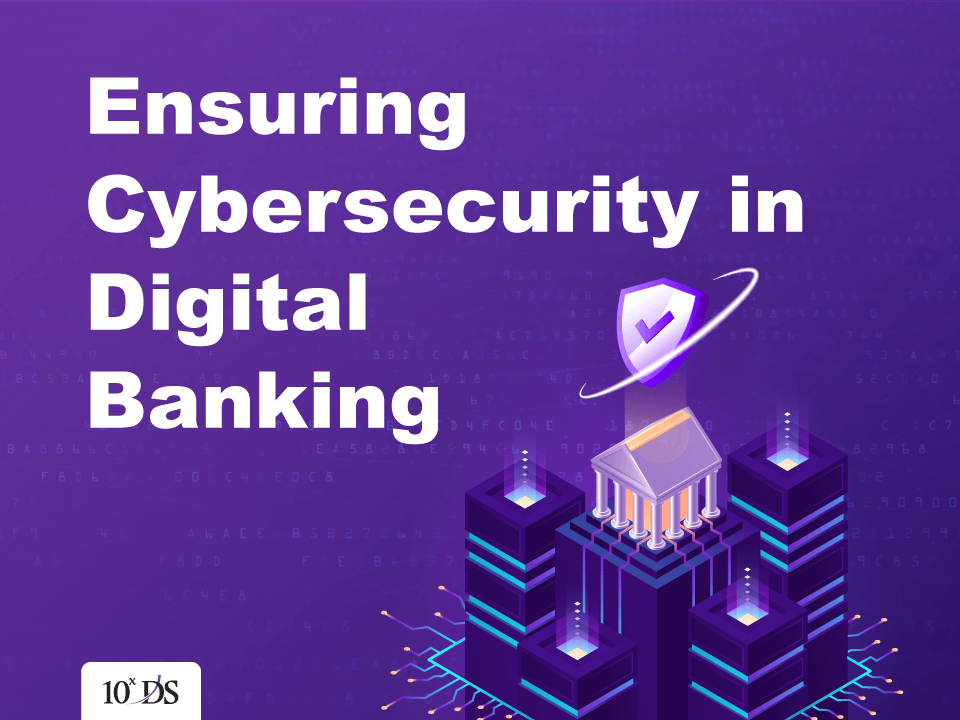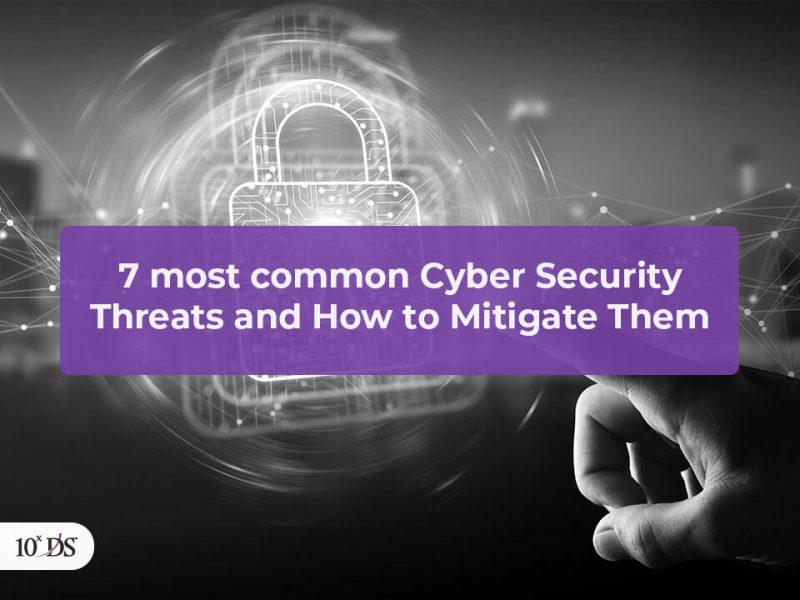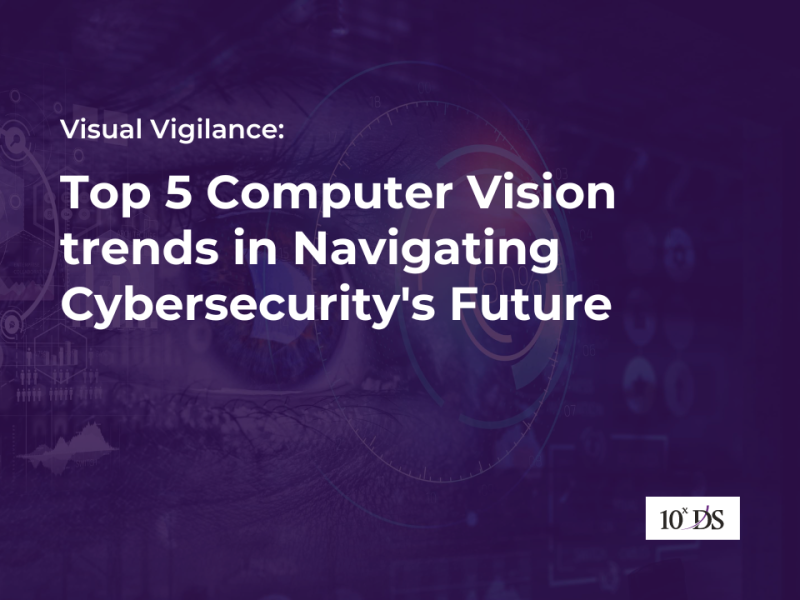
Ensuring Cybersecurity in Digital Banking
In 2002, the FBI (Federal Bureau of Investigations) warned worldwide organizations that there will be a rise in financial cybercrimes. The FBI also added that the increase in financial cybercrimes will be due to the increasing usage of digital banking services. They advised financial institutions and mobile banking providers to ensure cybersecurity in Digital Banking.
It is safe to say that digital banking gained immense popularity among customers during the Covid-19 pandemic. Companies and organizations faced several challenges, including global banking infrastructure when it comes to security, infrastructure availability, and personnel management as Covid19 rapidly spread across the world.
However, digital banking presented an opportunity for financial institutions to complete essential tasks while working remotely. Customers were also able to access different banking services via e-wallets and digital banking. In short, digital banking helped the global economy by ensuring faster and convenient financial transactions.
However, one of the major issues with the rise in digital banking is that it has made several financial institutions highly vulnerable to cyberattacks. In fact, banks, and financial institutions all over the world have admitted that they are facing security issues in their digital marketing models. Therefore, financial institutions should have a clear idea of common security issues in digital banking and how they can overcome them.
Common Security Challenges in Digital Banking
1. Identity theft
Did you know that there were approximately 651,000 identity thefts reported in the year 2018? The number of identity thefts has increased over the years, as it is incredibly easy to commit such thefts online. For instance, someone who has stolen a credit card will be able to make online purchases, which they won’t be able to do in-person because of Europay, MasterCard, Ad Visa (EMV) security.
Hackers and cybercriminals will be able to commit identity thefts even without using a credit card. Hackers may spy on the database of financial institutions to steal the account details of customers. In other words, criminals will not have to have any kind of personal contact with the victims to commit identity theft.
2. Credential stuffing
Credential stuffing is another common type of digital banking security issue, which is aimed to obtain the personal information of banking customers. Cybercriminals who are able to steal the account credentials of customers will be able to access their accounts without any hassles.
Hackers will also make use of the data obtained for bombarding bank servers and websites by continuously making several login requests. Most hackers also make use of web automation tools for logging hundreds of passwords and usernames into bank servers.
3. Banking account takeovers
Banking account takeover is a type of financial cybercrime that is executed when a hacker gets access to the account of an individual and alters the account information. The phone numbers and email addresses of cybercriminals are changed by hackers to block fund transfer notifications to the mail or phone of the original account holder.
As a result, the real account holder will not be able to know when a financial transaction is completed. It is crucial to remember that banking account takeover frauds have been increasing at an alarming rate over the last few years.
4. Phishing attacks
Phishing attacks that are primarily targeted at banking employees have significantly increased in recent years. During a phishing attack, the cybercriminal will trick the victim into opening or clicking a malicious link on an email. The link usually results in the installation of malware, which can freeze the victim’s system.
Phishing attacks might often lead to advanced persistent threats or APT in some cases. The risky part of APT attacks is that they will remain undetected for a very long period of time, which might put your financial organization at a higher risk of losing brand reputation and customer trust.
5. Spoofing
Spoofing is a modern type of financial cyberattack. During spoofing, hackers mimic the website URL of a financial organization with a fairly new website, which looks exactly the same as the financial organization’s website.
As a result, customers will not even be able to tell that they are on a fake website. Once customers enter their login credentials, hackers will be able to get that information and access customer accounts with ease.
Cybersecurity Solutions in Digital Banking
There are certain methods that can be helpful to check cyberattacks in digital banking.
1. Multi-factor authentication
The customer login process using a single password can easily compromise digital banking cybersecurity. On the other hand, activating multi-factor authentication can certainly ensure an additional layer of protection. This includes either sending an OTP to a mobile number or requiring fingerprint scanning. Although multi-factor authentication is expensive, the efforts are worth it for digital banking. Therefore, it is recommended to use multi-factor authentication for much safer method of customer login.
2. End-to-end encryption
Digital transactions through merchants, banks, card brands and payment gateway are hotspots for cybercriminals. This is a major concern for financial institutions. End–to–end data encryption is the best solution to make digital banking safer. This practice requires significant checks and tests, which takes data safety to the next level. In order to ensure end – to – encryption several algorithms, such as RSA, Blowfish, Twofish, AES, or Triple DES, can be utilized. SSL chain verification is the standard way to provide an encrypted connection between a web server and the browser. Also, computer networks can be made more secure if TLS Protocol is used.
3. Machine learning and big data analytics
Analytics is an essential element in leveraging cyber resilience. Big data analytics in cyber security involves the ability to gather massive amounts of digital information to analyse, visualize and draw insights that can make it possible to predict and stop cyber-attacks. It can strengthen in dealing with attacks, data breaches, facilitate better detection, risk management etc.
4. Enable real-time alerts
Banking institutions can use real-time alerts to notify customers about their online activity when an online payment via card or mobile is made. This helps to trigger an alert when an unauthorized transaction happens.
5. Customer awareness
Educating customers about the importance of cybersecurity is a must. Even if you have a robust security infrastructure, it fails if customers are not practicing the safety measures to ensure cybersecurity. They should be made aware not to disclose their banking credentials to anyone. Encourage them to report to the cybersecurity cell in case of any suspicious developments in their transactions or in their bank account as quickly as possible. Banks can send security recommendations to their customers via emails, text messages, in-app notifications, or putting text on web portals. Through this process, the customer becomes more aware in identifying cyber security threats.
Conclusion
Without adequate security measures, financial institutions and banks are prone to cyberattacks. Ultimately, these companies face financial losses and are at a disadvantage when compared to websites that have taken adequate security measures. So in the long run, it necessitates every financial institution to undertake foolproof cybersecurity measures which don’t compromise with the safety of customers’ and financial institutions’ data and money.
Talk to our expert Cybersecurity and IT Risk Assurance team to learn more about Cybersecurity issues in Digital Banking and the solutions organizations should implement for securing business.


